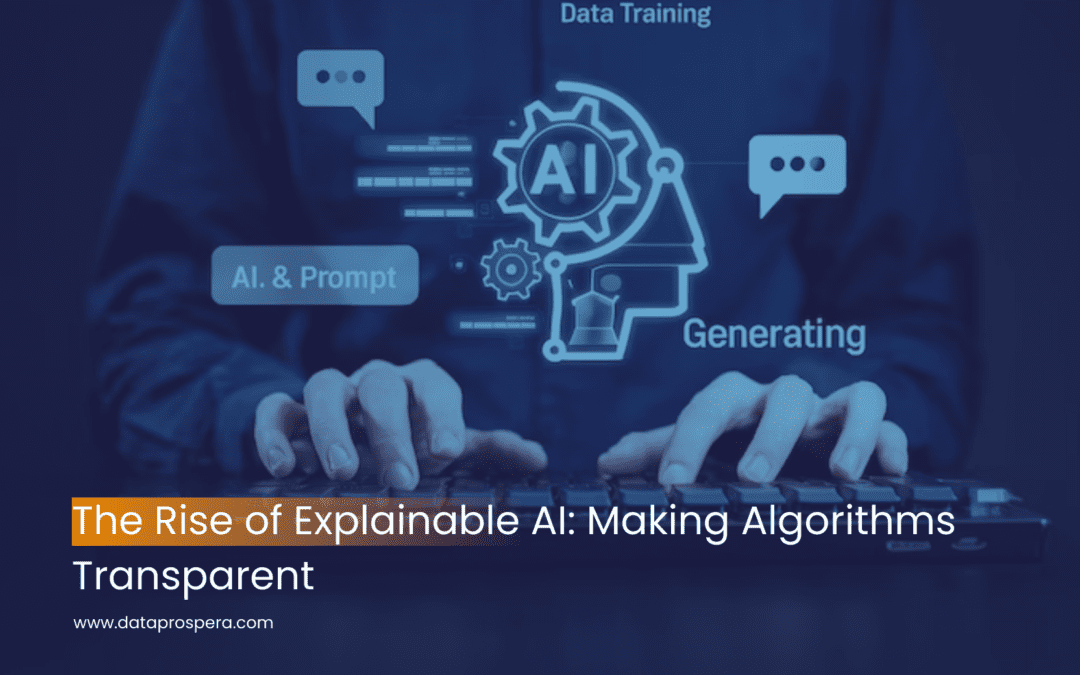As artificial intelligence becomes deeply embedded in our daily lives and critical decision-making systems, one question keeps emerging: How do we know why an AI made that decision? This is where Explainable AI (XAI) comes into play. It offers a bridge between complex machine learning models and human understanding—ensuring transparency, trust, and accountability.
What is Explainable AI?
Explainable AI refers to a set of processes and methods that help humans understand and trust the outputs of AI systems. Traditional “black box” models like deep neural networks are often highly accurate, but they don’t provide insight into how they arrive at decisions. XAI seeks to change that by making the AI’s logic visible, interpretable, and verifiable.
Why Transparency Matters
Algorithmic transparency isn’t just about satisfying curiosity—it has real-world implications:
- Trust and Adoption: Users are more likely to adopt AI tools when they understand how decisions are made.
- Regulatory Compliance: Laws such as the EU’s GDPR include a “right to explanation” when automated systems are involved.
- Bias Detection: Transparent models help identify and correct discriminatory or unfair behavior in AI systems.
- Ethical Decision-Making: Organizations can evaluate AI outputs based on moral or social criteria.
Techniques Behind XAI
Several techniques are helping developers create more interpretable AI systems:
- Feature Importance Visualization: Tools like SHAP and LIME show which features most influenced a decision.
- Surrogate Models: Simple models (like decision trees) approximate more complex models to explain behavior.
- Counterfactual Explanations: These provide “what-if” scenarios showing how small changes in input affect the output.
- Model Transparency by Design: Using inherently interpretable models like logistic regression or decision trees.
Industry Applications
Explainable AI is making waves in various sectors:
- Healthcare: Doctors need to understand AI-generated diagnoses or treatment recommendations to validate clinical decisions.
- Finance: Loan approval systems must justify decisions to comply with regulations and prevent discrimination.
- Public Sector: Governments use XAI to ensure fairness in public services and policy decision-making.
- Cybersecurity: Teams use XAI to explain threat detection results, improving response speed and accuracy.
See how we approach transparent AI in action: AI for Public Sector Innovation: Smarter Governance
Challenges of Explainable AI
While XAI offers clear benefits, it also faces key hurdles:
- Trade-off Between Accuracy and Interpretability: Highly accurate models are often less interpretable.
- Complexity of Explanation: Not all explanations are easy for end-users to understand.
- Scalability: Implementing XAI in large-scale systems can be resource-intensive.
The Future of XAI
The demand for explainable systems will continue to grow as AI is integrated into more mission-critical and sensitive environments. We can expect:
- Standardization of XAI Practices: Regulatory frameworks will define how explainability should be implemented.
- Better Human-AI Collaboration: XAI will help humans and machines work together more effectively.
- Wider Public Acceptance: Transparent AI will foster greater societal trust and responsible innovation.
Conclusion
The rise of Explainable AI is a response to the urgent need for accountability, transparency, and fairness in the era of intelligent systems. As businesses and governments increasingly rely on AI, ensuring that algorithms are not only powerful but also understandable becomes a strategic priority.
Want to explore how we integrate Explainable AI into real-world solutions? Visit our blog on Data Governance in the AI Era to learn more.


Recent Comments